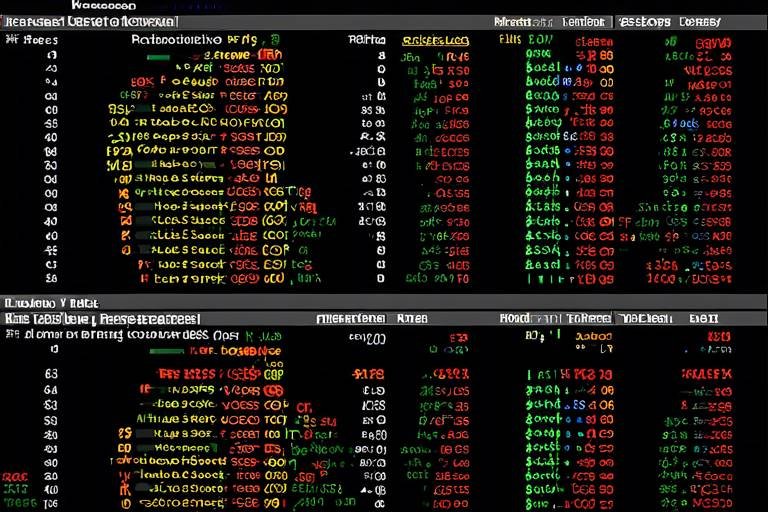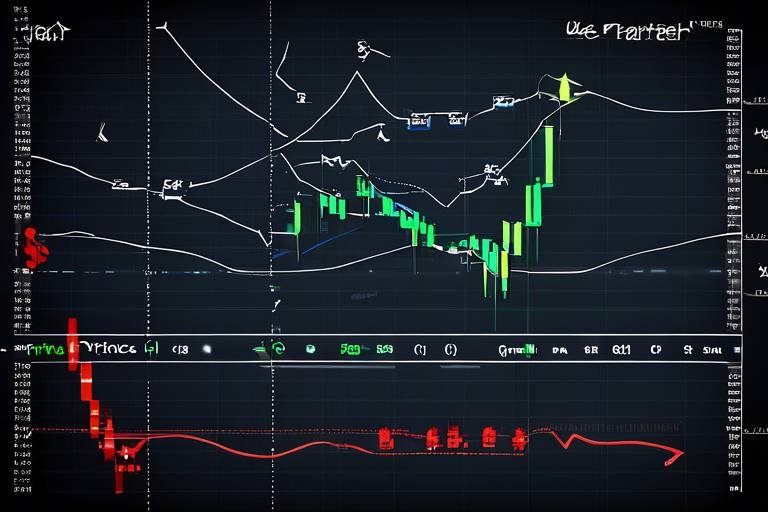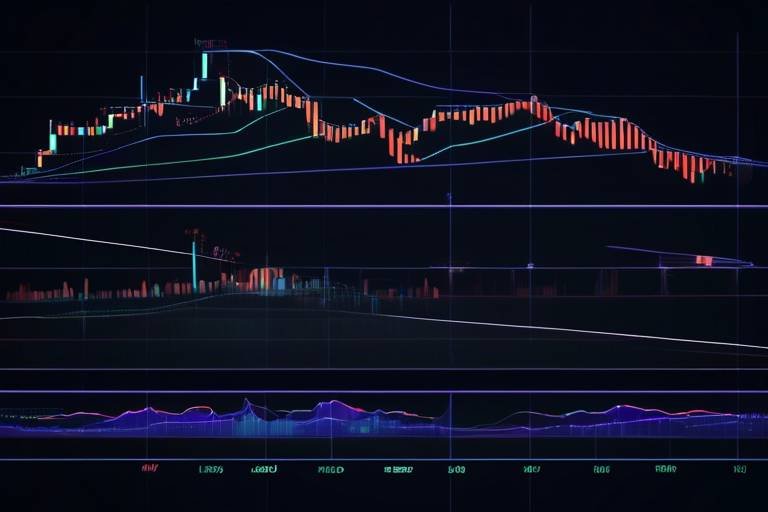How to Use Technical Analysis to Identify Safe Investments
In today's fast-paced financial world, the quest for safe investments can feel like searching for a needle in a haystack. But fear not! Technical analysis is here to save the day. Think of it as your trusty compass, guiding you through the tumultuous seas of the stock market. By assessing historical price movements and trading volumes, technical analysis allows you to make informed decisions about which investments are likely to weather the storm. So, how do you harness the power of technical analysis to spot those golden opportunities? Let's dive in!
At its core, technical analysis is all about evaluating securities based on the statistics generated from market activity. Imagine you’re a detective piecing together clues from the past to predict future events. This method relies heavily on price charts and trading volumes, providing insights into market sentiment and potential price movements. By understanding the underlying principles of technical analysis, you can enhance your investment strategy and increase your chances of identifying safe investments. It’s like having a crystal ball that reveals the patterns and trends hidden beneath the surface.
To effectively perform technical analysis, you need the right tools in your investment toolbox. These tools help you interpret market data and identify potential safe investments. Here are some of the key players in the world of technical analysis:
- Charts and Graphs: These visual aids represent price movements over time, enabling you to spot trends.
- Indicators and Oscillators: These mathematical calculations help confirm trends and potential reversals.
- Candlestick Patterns: These formations provide insights into market sentiment and can indicate potential price movements.
Charts are the backbone of technical analysis. They visually represent price movements over time, allowing investors to identify trends and patterns. There are several types of charts, including line charts, bar charts, and candlestick charts. Each type has its unique strengths, but the candlestick chart is particularly popular among traders due to its ability to convey more information at a glance. By analyzing these charts, you can see not just where a stock has been, but also where it might be headed, helping you make more informed investment decisions.
Candlestick patterns are like the mood rings of the stock market, providing insights into market sentiment. These patterns can indicate whether buyers or sellers are in control. For instance, a bullish engulfing pattern suggests that buyers are taking over, while a bearish engulfing pattern indicates that sellers are gaining strength. By familiarizing yourself with popular candlestick formations, you can better anticipate potential price movements and identify safe investment opportunities.
Moving averages are another essential tool in technical analysis. They smooth out price data to help identify trends over a specific period. There are different types of moving averages, such as the simple moving average (SMA) and the exponential moving average (EMA). By incorporating moving averages into your analysis, you can filter out the noise of daily price fluctuations and focus on the underlying trend, making it easier to spot safe investments.
Indicators and oscillators are vital for confirming trends and potential reversals. They can provide additional layers of analysis, helping you make more informed decisions. Some of the most effective indicators include:
- Relative Strength Index (RSI): This measures the speed and change of price movements, indicating whether a stock is overbought or oversold.
- Moving Average Convergence Divergence (MACD): This shows the relationship between two moving averages, helping identify potential buy and sell signals.
- Bollinger Bands: These bands help determine whether prices are high or low on a relative basis, providing insights into volatility.
Understanding market trends is crucial for making informed investment decisions. By analyzing trends, you can identify potential safe investments that align with your financial goals. Recognizing whether the market is in a bullish or bearish phase can significantly impact your investment strategy. For instance, in a bull market, investors may feel more confident taking risks, while in a bear market, caution is key.
Distinguishing between bull and bear markets is essential for strategizing effectively. A bull market is characterized by rising prices and investor optimism, while a bear market features declining prices and pessimism. By recognizing these conditions through technical analysis, you can adjust your investment approach accordingly. For example, during a bull market, you might focus on growth stocks, whereas in a bear market, defensive stocks may be a safer bet.
Support and resistance levels are key concepts in technical analysis that can significantly influence your investment decisions. Support levels indicate where a stock's price tends to stop falling and may bounce back, while resistance levels show where a stock's price tends to stop rising. By identifying these levels, you can make more informed choices about when to enter or exit a trade, enhancing your chances of securing safe investments.
Effective risk management is essential for protecting your investments. By employing strategies such as setting stop-loss orders, diversifying your portfolio, and only investing what you can afford to lose, you can minimize risk while using technical analysis to identify safe investments. Remember, the goal is not just to make money but to preserve your capital in the long run.
Q: What is technical analysis?
A: Technical analysis is the evaluation of securities by analyzing statistics generated from market activity, primarily price movements and trading volumes.
Q: How can I identify safe investments using technical analysis?
A: By using tools like charts, indicators, and candlestick patterns, you can analyze market trends and conditions to spot safe investment opportunities.
Q: What are support and resistance levels?
A: Support levels are price points where a stock tends to stop falling, while resistance levels are where it tends to stop rising. Identifying these levels can help guide your investment decisions.
Q: Why is risk management important?
A: Risk management is crucial for protecting your investments. By using strategies to minimize risk, you can preserve your capital and enhance your chances of long-term success.

Understanding Technical Analysis
Technical analysis is a fascinating approach to evaluating securities that focuses on the statistical data generated from market activity. Unlike fundamental analysis, which looks at a company's financial health and economic conditions, technical analysis dives deep into price movements and trading volumes. Think of it as reading the pulse of the market; it tells you how the market feels about a particular stock at any given moment. By analyzing these movements, investors can make informed decisions about when to buy or sell their investments.
The core concept of technical analysis revolves around the idea that market sentiment is reflected in price movements. This means that all available information—be it news, earnings reports, or economic indicators—is already priced into the stock. Therefore, the focus shifts to understanding past price movements and volume trends to predict future behavior. This predictive power is what makes technical analysis a valuable tool for investors looking to identify safe investment opportunities.
One of the most significant advantages of technical analysis is its versatility. It can be applied to various types of securities, including stocks, bonds, commodities, and even cryptocurrencies. Whether you're a seasoned trader or a novice investor, technical analysis provides a framework to make sense of market noise. By recognizing patterns and trends, you can spot potential investment opportunities that may otherwise go unnoticed.
In technical analysis, one key principle is that history tends to repeat itself. Traders believe that patterns formed in the past can re-emerge under similar market conditions. This belief underscores the importance of charting and pattern recognition, which are central to technical analysis. By studying historical price charts, investors can identify recurring patterns that signal potential price movements. It's like having a map that guides you through the often turbulent waters of the stock market.
Moreover, technical analysis is not just about identifying trends; it also involves understanding the psychology of market participants. Investors' emotions—fear, greed, and optimism—play a crucial role in price movements. For instance, when a stock price rises sharply, it may attract more investors who fear missing out, driving the price even higher. Conversely, when prices fall, panic selling may ensue, pushing prices down further. By grasping these psychological factors, investors can make more informed decisions and potentially identify safe investments that others might overlook.
To sum it up, technical analysis is a powerful tool for investors seeking to navigate the complexities of the stock market. By understanding price movements, patterns, and market psychology, you can improve your chances of making wise investment choices. Whether you're looking to buy low and sell high or simply want to protect your investments, mastering the principles of technical analysis can significantly enhance your investment strategy.
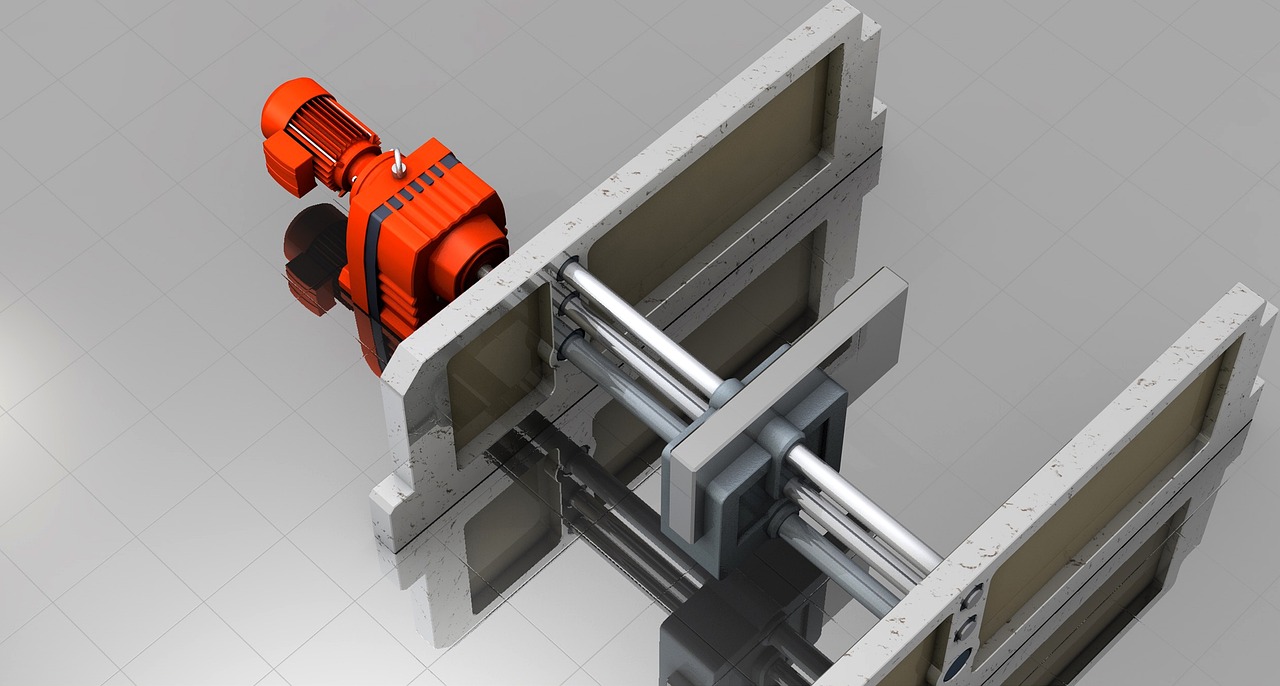
Key Tools for Technical Analysis
When diving into the world of technical analysis, it’s essential to equip yourself with the right tools. These tools are like a treasure map, guiding you through the complex landscape of stock market investments. They help you make sense of price movements, trends, and market sentiment, ultimately leading you to safer investment opportunities. So, let’s explore the key tools that every investor should have in their arsenal.
First and foremost, charts and graphs are the backbone of technical analysis. They visually represent price movements over time, allowing you to spot patterns that might indicate future performance. Think of charts as your personal GPS in the investment journey. There are various types of charts, each serving a unique purpose. For instance, line charts provide a simple view of price trends, while bar charts offer more detailed information about price movements over specific periods. However, the real stars of the show are candlestick charts, which not only display price information but also convey market sentiment through their formations.
Candlestick patterns are vital indicators of market psychology. Each candlestick represents a specific time frame and indicates whether the market closed higher or lower than it opened. Some popular patterns include the Doji, which signals indecision, and the Hammer, often seen as a bullish reversal signal. By understanding these patterns, you can gain insights into potential market movements. Just like reading the emotions on a friend's face, candlestick patterns help you gauge the mood of the market.
Another critical tool in technical analysis is the moving average. This tool smooths out price data over a specified period, helping to identify trends more clearly. There are different types of moving averages, including the simple moving average (SMA) and the exponential moving average (EMA). The SMA calculates the average price over a set number of days, while the EMA gives more weight to recent prices, making it more responsive to new information. By using moving averages, you can filter out the noise and focus on the overall direction of the market.
Indicators and oscillators are essential for confirming trends and identifying potential reversals. Tools like the Relative Strength Index (RSI) and Moving Average Convergence Divergence (MACD) help you gauge whether a stock is overbought or oversold. The RSI ranges from 0 to 100, with readings above 70 indicating overbought conditions and below 30 suggesting oversold conditions. On the other hand, the MACD helps you spot changes in momentum by comparing two moving averages. By incorporating these indicators, you can enhance your decision-making process and pinpoint safer investment opportunities.
In summary, utilizing these key tools for technical analysis can significantly improve your investment strategy. By understanding charts, candlestick patterns, moving averages, and indicators, you can navigate the stock market with confidence. Each tool serves a purpose, and when combined, they create a comprehensive picture of market dynamics. Remember, the goal is to identify trends and make informed decisions that lead to safer investments.
- What is the primary goal of technical analysis?
Technical analysis aims to evaluate securities by analyzing statistical trends from trading activity, helping investors make informed decisions. - How do I choose the right tools for technical analysis?
Choosing the right tools depends on your investment strategy, market conditions, and personal preferences. Start with basic charting tools and gradually incorporate more advanced indicators. - Can technical analysis guarantee safe investments?
No method can guarantee safety in investments, but technical analysis can enhance your ability to make informed decisions and reduce risks.

Charts and Graphs
When it comes to technical analysis, are your best friends. They are like the visual storytellers of the stock market, transforming complex data into easily digestible insights. Imagine trying to read a novel without any pictures; it would be a bit dull and hard to follow, right? Similarly, charts help investors grasp the narrative behind price movements, making it easier to identify trends and potential safe investment opportunities.
There are several types of charts that traders commonly use, each with its unique flair and functionality. The most popular among them include:
- Line Charts: These are the simplest form of charts, plotting the closing prices over a period. They provide a clear view of the overall trend but lack the detail of other chart types.
- Bar Charts: These offer more information, showing the opening, closing, high, and low prices for a specific time frame. They give a fuller picture of market activity.
- Candlestick Charts: A favorite among traders, these charts display the same information as bar charts but in a more visually appealing format. Each "candlestick" represents price movements for a specific period, with color coding to indicate whether the price went up or down.
Among these, candlestick charts stand out for their ability to convey market sentiment at a glance. Each candlestick can tell a story of its own, revealing whether buyers or sellers are in control. For example, a long green candlestick indicates strong buying pressure, while a long red one suggests selling pressure. This visual representation can be a game-changer when identifying potential safe investments.
To illustrate how these charts function, consider the following table that summarizes key candlestick patterns and their implications:
| Pattern | Description | Implication |
|---|---|---|
| Hammer | A small body with a long lower shadow. | Potential reversal signal; bullish. |
| Inverted Hammer | A small body with a long upper shadow. | Potential reversal signal; bullish. |
| Engulfing | A larger body engulfs the previous day's body. | Strong reversal signal; bullish or bearish depending on the direction. |
Using charts effectively requires practice and a keen eye for detail. As you become more familiar with price movements, you'll start to see patterns emerge, much like recognizing familiar faces in a crowd. The key is to stay patient and allow the charts to guide you in your investment decisions.
In conclusion, charts and graphs are indispensable tools in technical analysis. They not only simplify complex data but also empower investors to make informed decisions. By mastering these visual aids, you can enhance your ability to spot safe investment opportunities in the ever-changing stock market landscape.
What is the best type of chart for beginners?
Line charts are often recommended for beginners due to their simplicity and ease of understanding.
How can candlestick patterns help in making investment decisions?
Candlestick patterns provide insights into market sentiment and can signal potential reversals or continuations of trends.
Is technical analysis suitable for long-term investments?
While technical analysis is often used for short-term trading, it can also be beneficial for long-term investors to identify entry and exit points.

Candlestick Patterns
Candlestick patterns are like the emotional heartbeat of the market. They provide a visual representation of price movements and can reveal the market sentiment at a glance. Imagine walking into a crowded room and instantly sensing the mood—are people excited, anxious, or indifferent? Similarly, candlestick patterns can help investors gauge whether the market is feeling bullish or bearish. Each candlestick represents a specific time frame, showing the open, close, high, and low prices, and when analyzed together, they can form various patterns that indicate potential market movements.
There are several key candlestick patterns that every investor should be aware of. Some of the most popular ones include:
- Doji: This pattern indicates indecision in the market. A doji forms when the opening and closing prices are virtually the same, suggesting that buyers and sellers are at a stalemate.
- Hammer: This bullish reversal pattern appears after a downtrend and indicates that buyers are starting to take control. The hammer has a small body and a long lower shadow, resembling a hammer.
- Engulfing Pattern: This pattern consists of two candles, where the second candle completely engulfs the first one. A bullish engulfing pattern signals potential upward momentum, while a bearish engulfing pattern suggests a downward shift.
Understanding these patterns can significantly enhance your ability to make informed investment decisions. For instance, spotting a hammer after a downtrend might signal that it's time to consider entering a position, as it suggests that buyers are stepping in. On the other hand, recognizing a doji could prompt you to exercise caution, as it indicates uncertainty in the market.
However, it's essential to remember that no single candlestick pattern is foolproof. They should be used in conjunction with other technical analysis tools to confirm trends and reversals. Think of candlestick patterns as clues in a mystery novel; they provide valuable insights but require further investigation to uncover the complete story. By combining candlestick analysis with moving averages or other indicators, you can create a more robust strategy for identifying safe investment opportunities.
In conclusion, mastering candlestick patterns can be a game-changer for investors looking to navigate the stock market effectively. They not only help in understanding market sentiment but also provide critical signals for potential price movements. So, the next time you analyze a stock, take a moment to look at the candlestick patterns—who knows, they might just reveal the opportunity you've been waiting for!
- What is a candlestick pattern? A candlestick pattern is a visual representation of price movements in a specific time frame, which helps traders understand market sentiment.
- How do I read candlestick patterns? To read candlestick patterns, look at the body and wicks of the candlesticks to determine the open, close, high, and low prices, and analyze the formation of multiple candles.
- Are candlestick patterns reliable? While candlestick patterns can provide valuable insights, they should be used in conjunction with other technical analysis tools for more reliable signals.

Moving Averages
Moving averages are one of the most widely used tools in technical analysis, acting as a compass for investors navigating the often turbulent waters of the stock market. By smoothing out price data over a specified period, moving averages help to reveal the underlying trend, making it easier to identify potential safe investment opportunities. Think of it like a GPS for your investment journey; while the market may have its ups and downs, moving averages provide a clearer path by filtering out the noise.
There are several types of moving averages, each serving a unique purpose. The two most common types are the Simple Moving Average (SMA) and the Exponential Moving Average (EMA). The SMA calculates the average of a security's price over a specific number of periods, providing a straightforward look at price trends. On the other hand, the EMA gives more weight to recent prices, making it more responsive to new information. This responsiveness can be crucial when identifying short-term investment opportunities.
To illustrate how moving averages work, consider the following table that shows the closing prices of a hypothetical stock over a week and the corresponding 3-day SMA:
| Day | Closing Price | 3-Day SMA |
|---|---|---|
| Monday | $10.00 | N/A |
| Tuesday | $10.50 | N/A |
| Wednesday | $11.00 | $10.50 |
| Thursday | $10.75 | $10.75 |
| Friday | $11.25 | $10.83 |
As you can see from the table, the 3-day SMA provides a smoothed line that helps investors identify the trend. When the current price moves above the SMA, it might indicate a potential buying opportunity, while a price falling below the SMA could suggest a sell signal. This simple yet powerful technique allows investors to make more informed decisions about when to enter or exit a position.
Moreover, moving averages can also be used to identify potential crossovers. A crossover occurs when a shorter-term moving average crosses above or below a longer-term moving average. For example, if a 10-day EMA crosses above a 50-day EMA, it may signal the start of a bullish trend, while the opposite crossover could indicate a bearish trend. These crossovers can serve as critical signals for investors looking to identify safe entry and exit points.
In conclusion, moving averages are a fundamental component of technical analysis that can significantly enhance your investment strategy. By providing clarity amidst the chaos of price fluctuations, they help investors make well-informed decisions. Whether you are a seasoned trader or just starting, understanding and utilizing moving averages can be a game-changer in identifying safe investment opportunities.

Indicators and Oscillators
Indicators and oscillators play a crucial role in the realm of technical analysis, acting as the navigational tools that help investors chart their course through the often turbulent waters of the stock market. These mathematical calculations, derived from price and volume data, are designed to provide insights into market momentum and potential price reversals. By analyzing these indicators, you can make more informed decisions, increasing your chances of identifying safe investment opportunities.
One of the most popular indicators is the Relative Strength Index (RSI). This momentum oscillator measures the speed and change of price movements, providing a value between 0 and 100. An RSI above 70 typically indicates that a security is overbought, while an RSI below 30 suggests it may be oversold. Understanding these signals can help you determine when to enter or exit a position, thereby enhancing your investment strategy.
Another essential tool is the Moving Average Convergence Divergence (MACD). This indicator consists of two moving averages that help identify changes in the strength, direction, momentum, and duration of a trend. When the MACD line crosses above the signal line, it can be a bullish signal, while a cross below may indicate a bearish trend. Investors often use MACD in conjunction with other indicators to confirm trends, thereby reducing the risk of false signals.
Additionally, the Bollinger Bands are widely used to assess market volatility and identify overbought or oversold conditions. These bands consist of a middle band (the moving average) and two outer bands that represent standard deviations from the average. When the price approaches the upper band, it may indicate that the asset is overbought, while a price near the lower band could suggest it is oversold. This visual representation helps investors make quick decisions about potential entry and exit points.
While indicators are incredibly useful, it's important to remember that they are not foolproof. They should be used in conjunction with other forms of analysis, such as fundamental analysis and market sentiment, to create a well-rounded investment strategy. The combination of indicators and oscillators with other analytical tools can significantly enhance your ability to spot safe investments amidst market noise.
In summary, incorporating indicators and oscillators into your technical analysis toolkit can provide valuable insights into market trends and potential investment opportunities. By understanding how to interpret these tools effectively, you can navigate the complexities of the stock market with greater confidence and precision.
- What are the most commonly used indicators in technical analysis?
Some of the most popular indicators include the Relative Strength Index (RSI), Moving Average Convergence Divergence (MACD), and Bollinger Bands.
- How can I combine indicators for better analysis?
Using multiple indicators together can help confirm trends and reduce the likelihood of false signals. For instance, combining RSI with MACD can provide a clearer picture of market momentum.
- Are indicators reliable for predicting market movements?
While indicators can provide insights, they are not 100% reliable. It's essential to use them alongside other analyses to make informed decisions.
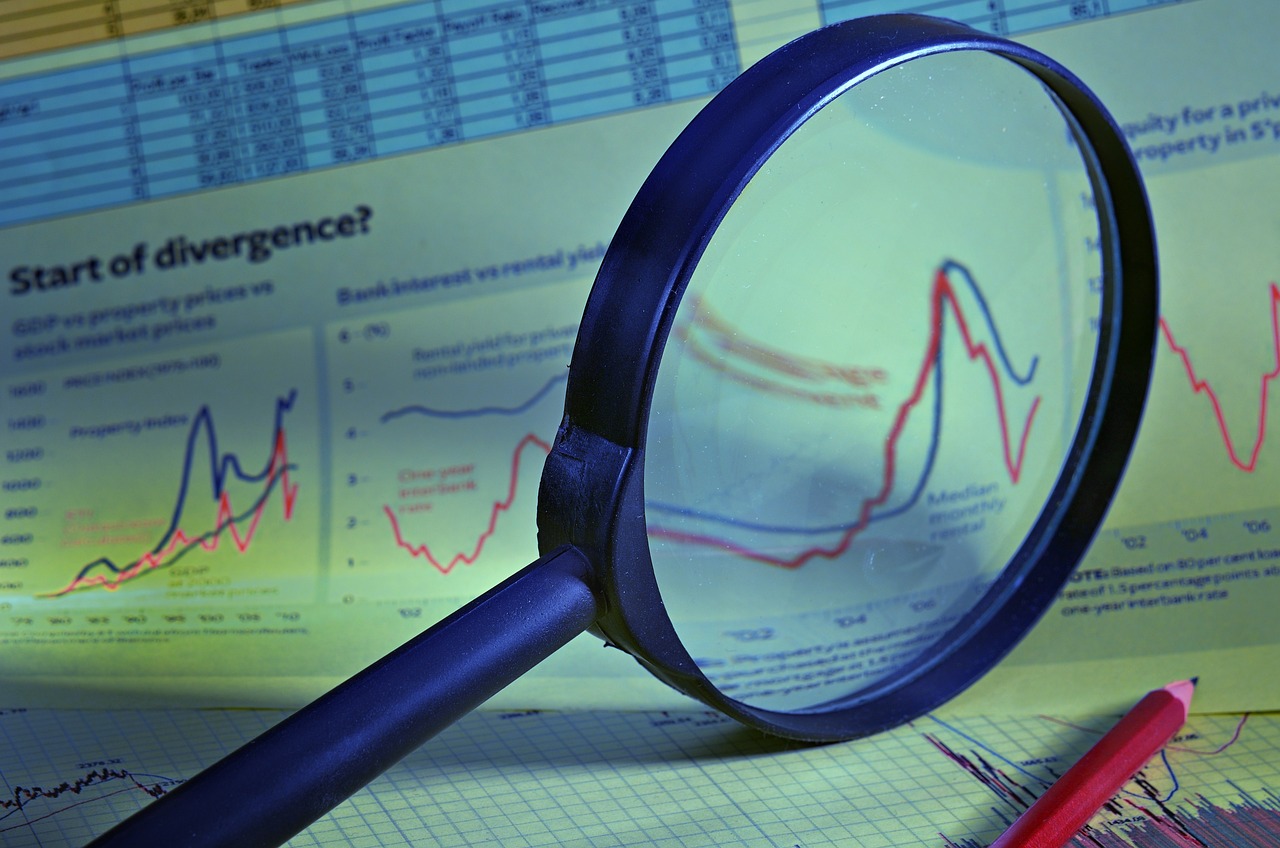
Interpreting Market Trends
When it comes to investing, understanding market trends is like having a compass in a dense forest. It guides you through the chaos and helps you make informed decisions. Market trends reflect the overall direction in which the market is moving, and they can be categorized into three main types: upward (bull), downward (bear), and sideways (ranging). Recognizing these trends is crucial because they can significantly impact your investment strategy.
So, how do you go about analyzing these trends? First off, it’s essential to look at price movements over time. This is where technical analysis shines. By examining historical data, you can identify patterns and predict future movements. Remember, the market is often driven by investor sentiment, which can be influenced by various factors such as economic data, news events, and even social media trends. Therefore, keeping an eye on these elements can provide valuable insights into market behavior.
One effective way to interpret market trends is by using trend lines. These are straight lines drawn on a chart that connect the highs or lows of price movements. A trend line can help you visualize the direction of the market. For example, if you see a series of higher highs and higher lows, it's an indication of an upward trend. Conversely, if the trend line shows lower highs and lower lows, you might be looking at a downward trend. This visual representation can be incredibly powerful in guiding your investment decisions.
Another critical aspect of interpreting market trends is understanding the concept of market cycles. Just like the seasons change, markets go through cycles of expansion and contraction. Typically, these cycles can be divided into four phases: accumulation, uptrend, distribution, and downtrend. During the accumulation phase, savvy investors start buying as prices are low, setting the stage for the next uptrend. As the market moves into the uptrend phase, prices rise, and more investors jump in, driving prices even higher. However, this can’t last forever, and eventually, the market reaches a point of saturation—known as the distribution phase—where the smart money starts selling off their holdings. Finally, the market enters a downtrend, where prices fall and panic selling may occur.
To get a clearer picture of market trends, it’s also essential to recognize the importance of volume. Volume refers to the number of shares traded during a specific timeframe. High volume during an uptrend suggests strong investor interest and can indicate that the trend is likely to continue. On the other hand, low volume during an uptrend might signal a lack of conviction, making the trend more susceptible to reversal. Therefore, always consider volume alongside price movements for a more comprehensive analysis.
In summary, interpreting market trends is a multifaceted process that involves analyzing price movements, understanding market cycles, and considering volume. By honing your skills in these areas, you'll be better equipped to identify safe investment opportunities. Remember, investing is not just about picking stocks; it's about understanding the broader market landscape and making informed decisions based on solid analysis.
- What is a bull market? A bull market is characterized by rising prices and investor optimism, typically lasting for an extended period.
- What is a bear market? A bear market occurs when prices fall significantly, leading to widespread pessimism among investors.
- How can I identify support and resistance levels? Support levels are price points where a stock tends to stop falling and may bounce back, while resistance levels are where it typically stops rising and may fall back.
- Why is volume important in technical analysis? Volume helps confirm trends; high volume during price movements indicates strong interest and can validate the trend's strength.

Identifying Bull and Bear Markets
When it comes to investing, distinguishing between bull and bear markets can feel like navigating through a dense fog. A bull market is characterized by rising prices and a general sense of optimism among investors, while a bear market is marked by falling prices and a prevailing sense of pessimism. Understanding these market conditions is crucial for making informed investment decisions, as they can significantly influence your strategy.
So, how can you identify whether the market is in a bullish or bearish phase? One effective method is to analyze market trends through price movements over time. Typically, a bull market is identified when stock prices rise by at least 20% from recent lows. Conversely, a bear market occurs when prices drop by the same percentage from recent highs. But there’s more to it than just numbers; sentiment plays a vital role. You might notice headlines filled with positive news during a bull market, while during a bear market, the media often highlights negative events and economic downturns.
Another critical factor in identifying these markets is the duration of price movements. Bull markets can last for several months or even years, while bear markets tend to be shorter, often lasting only a few months. However, this isn't a hard and fast rule. Sometimes, you might encounter corrections—temporary dips within a bull market that can confuse even seasoned investors. It's essential to keep an eye on the overall trend rather than getting caught up in short-term fluctuations.
Additionally, understanding market sentiment can help clarify the situation. Look for indicators such as the Consumer Confidence Index or the Investor Sentiment Survey. High consumer confidence usually correlates with bull markets, while low confidence often aligns with bear markets. Social media sentiment can also provide insights; a surge in positive posts about stocks could indicate a bull market, while a flood of negative sentiment might signal a bear phase.
To sum it up, identifying bull and bear markets involves a mix of quantitative analysis and qualitative assessment. By closely monitoring price movements, market sentiment, and broader economic indicators, you can better position yourself to make savvy investment choices that align with the current market conditions. Remember, the key is not just to recognize these phases but to adapt your strategy accordingly. In the world of investing, timing can be everything!
- What is a bull market? A bull market is a period in which prices are rising or are expected to rise, typically characterized by a rise of 20% or more in stock prices.
- What is a bear market? A bear market occurs when prices fall by 20% or more from recent highs, often accompanied by widespread pessimism.
- How long do bull and bear markets last? Bull markets can last for several months to years, while bear markets usually last shorter periods, often several months.
- What indicators can help identify market trends? Key indicators include price movements, market sentiment, and economic indicators like the Consumer Confidence Index.

Support and Resistance Levels
Understanding is like having a map in the unpredictable landscape of the stock market. These levels act as psychological barriers where prices tend to stop and reverse. Think of support as the floor that prevents prices from falling further, while resistance acts as the ceiling that keeps prices from rising too high. By identifying these levels, you can make more informed decisions about when to enter or exit a trade, ultimately leading to safer investment opportunities.
So, how do you determine these crucial levels? It often involves analyzing historical price movements. A support level is typically established when the price has previously bounced back up after hitting a low point. Conversely, a resistance level can be identified when prices have repeatedly failed to break through a certain point on the upside. This repeated behavior creates a kind of self-fulfilling prophecy, as traders around the world recognize these levels and act accordingly.
To illustrate this concept, let’s consider a simple table that outlines how to identify support and resistance levels through historical price data:
| Price Level | Action Taken | Market Reaction |
|---|---|---|
| $50 | Bounced back after hitting this level | Identified as a support level |
| $70 | Failed to break through this level multiple times | Identified as a resistance level |
| $60 | Price fluctuated around this level | Potential consolidation zone |
In addition to historical price data, traders often use technical indicators to confirm these levels. Tools like Fibonacci retracement and pivot points can provide additional insights into where support and resistance might lie. For example, if the price approaches a Fibonacci retracement level and shows signs of bouncing back, that could reaffirm its role as a support level.
It's also important to remember that support and resistance levels are not set in stone. They can shift over time due to changes in market sentiment, economic conditions, or significant news events. This dynamic nature means that traders need to stay vigilant and adjust their strategies accordingly.
In essence, understanding support and resistance levels is a fundamental skill for anyone looking to navigate the stock market safely. By recognizing these levels, you can make more strategic investment decisions, minimizing the risk of losses while maximizing potential gains. So, the next time you analyze a stock, take a moment to identify these critical points; they might just be the key to your investment success!

Risk Management Techniques
When it comes to investing, the only thing certain is uncertainty. That's why risk management is a crucial component of any investment strategy, especially when utilizing technical analysis to spot safe opportunities. Think of risk management as your safety net; it won't eliminate risk entirely, but it can significantly reduce the potential for catastrophic losses. So, how do we effectively manage risk while navigating the stock market?
First, it's essential to understand your own risk tolerance. This involves assessing how much risk you can realistically handle without losing sleep at night. Are you a conservative investor who prefers stability, or are you willing to embrace volatility for the chance of higher returns? Knowing where you stand will guide your investment choices. Once you have a clear picture of your risk tolerance, you can implement several strategies to protect your investments.
One effective technique is the use of stop-loss orders. These orders automatically sell a security when it reaches a certain price, thereby limiting your potential losses. For instance, if you purchase a stock at $100 and set a stop-loss order at $90, your losses are capped at 10%. This not only protects your capital but also takes the emotion out of the decision-making process. You might be wondering, “What if the stock bounces back after I sell?” That's a valid concern, but remember, the goal here is to preserve your capital for future investments.
Another important aspect of risk management is diversification. By spreading your investments across various sectors, industries, or asset classes, you can significantly reduce the impact of a poor-performing investment on your overall portfolio. Imagine you have a basket of eggs; if you put all your eggs in one basket and that basket falls, you’re left with a mess. However, if you distribute those eggs across multiple baskets, a fall won’t break them all. Diversification acts as a buffer against market volatility.
Additionally, employing position sizing is a technique that helps you determine how much to invest in a particular asset based on your total capital and risk tolerance. This means if you have a smaller risk tolerance, you might only invest a small percentage of your portfolio in a high-risk stock, while allocating more to safer, stable investments. For example, if your total portfolio is $10,000 and you decide to risk only 1% on a single trade, you would only invest $100 in that trade. This approach allows you to weather the storm of market fluctuations without devastating losses.
Lastly, it's vital to regularly review and adjust your investment strategy. The market is dynamic, and what works today might not work tomorrow. By keeping an eye on your investments and the overall market conditions, you can make informed decisions about when to hold, sell, or reallocate your resources. Remember, the key to successful investing is not just about making money—it's about protecting what you have while seeking opportunities for growth.
In summary, effective risk management techniques such as understanding your risk tolerance, using stop-loss orders, diversifying your portfolio, employing position sizing, and regularly reviewing your strategy can significantly enhance your ability to identify safe investments through technical analysis. With these tools in your arsenal, you'll be better equipped to navigate the unpredictable waters of the stock market.
- What is risk management in investing? Risk management in investing refers to the strategies and techniques used to minimize the potential for financial loss in investments.
- How do stop-loss orders work? Stop-loss orders automatically sell a security when it reaches a predetermined price, helping to limit potential losses.
- Why is diversification important? Diversification helps reduce the impact of any single investment's poor performance on your overall portfolio, acting as a buffer against market volatility.
- How can I determine my risk tolerance? Assess your financial situation, investment goals, and emotional response to market fluctuations to determine your risk tolerance.
- Should I regularly review my investment strategy? Yes, regularly reviewing your investment strategy allows you to adapt to changing market conditions and make informed decisions.
Frequently Asked Questions
- What is technical analysis?
Technical analysis is the study of past market data, primarily price and volume, to forecast future price movements. By examining charts and patterns, investors can make informed decisions about buying and selling securities.
- How can I use technical analysis to find safe investments?
To identify safe investments, you can use technical analysis tools like charts, moving averages, and indicators. These tools help you spot trends and potential reversals, allowing you to make educated choices about when to enter or exit a position.
- What are candlestick patterns and why are they important?
Candlestick patterns are visual representations of price movements that indicate market sentiment. They help traders understand potential market reversals or continuations, making them crucial for identifying safe investment opportunities.
- What role do support and resistance levels play in technical analysis?
Support and resistance levels are critical in technical analysis as they indicate price points where a stock tends to stop and reverse. Recognizing these levels can help investors determine entry and exit points for their trades, ensuring better risk management.
- How do moving averages assist in technical analysis?
Moving averages smooth out price data over a specified period, helping to identify trends. By using different types of moving averages, investors can gauge the strength of a trend and make decisions about potential safe investments.
- What are the best indicators for confirming trends?
Some of the best indicators for confirming trends include the Relative Strength Index (RSI), Moving Average Convergence Divergence (MACD), and Bollinger Bands. These tools provide insights into market momentum and can help validate your analysis.
- How can I distinguish between bull and bear markets?
A bull market is characterized by rising prices and investor confidence, while a bear market features declining prices and pessimism. Using technical analysis, you can identify these market conditions by analyzing trends and price patterns.
- What are some effective risk management techniques?
Effective risk management techniques include setting stop-loss orders, diversifying your portfolio, and only investing a small percentage of your capital in any single trade. These strategies help protect your investments while using technical analysis to identify opportunities.








